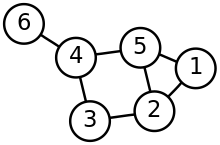티베토카나우루스어군
Tibeto-Kanauri languages보디크어, 보디쉬-히말레이시어어어, 서부 티벳토-부르만어라고도 불리는 티베토-카나우리어는 티베토어족과 킨나우리족 방언군단을 중심으로 중국-티베타어족의 중간 분류가 제안되고 있다. 관계에 대한 개념, 혹은 그것이 유효한 집단이라도 되는 경우에는 연구자들마다 다르다.
티베토카나우리의 개념
베네딕트(1972년)는 원래 티베토-카나우리를 정점으로 했다. 보디쉬-히말레이시어 관계지만, 치앙치, 마가릭, 렙차 등 오늘날 일반적으로 발견되는 히말라야어 개념보다 더 확장된 개념을 가지고 있었다. 베네딕트의 구상 내에서 티베토-카나우리는 티베토-부르만어군 내에서 스펙트럼을 따라 중력의 중심인 7개의 언어핵 중 하나이다. 베네딕트가 확인한 가장 중심핵은 징포어(아마도 카친어를 포함)이다.Luic and Tamangic languages); other peripheral nuclei besides Tibeto-Kanauri include the Kiranti languages (Bahing–Vayu and perhaps the Newar language); the Tani languages; the Bodo–Garo languages and perhaps the Konyak languages); the Kukish languages (Kuki–Naga plus perhaps the Karbi language, the Meitei language and the Mru language); and the Burmish 언어(Lolo-Burmese 언어, 아마도 Nung 언어와 Trung 언어)[2]
마티소프(1978년, 2003년)는 주로 베네딕트의 계획을 따르고 있으며, 티베토-부르만어와 중국-티베탄어 연구에 있어 상세한 가계도를 지도화하는 것보다 관련 특성을 식별하는 텔레톨로지적 가치를 강조했다. 마티소프는 렙차 언어를 제3지점으로 하는 보디쉬와 히말라야 서부를 포함한다. 그는 이것들을 히말라야어로 마하키란티와 더 높은 수준에서 결합시킨다.[3][4]
밴 드리엠(2001)은 보디쉬어, 서 히말라야어, 타망어어(그러나 베네딕트의 다른 가정은 그렇지 않음)가 공통적인 기원을 가지고 있는 것으로 보인다고 지적한다.[5]
브래들리(1997)도 같은 접근방식을 취하지만 말은 다르다. 즉, 그는 웨스트 히말라야어와 타망어를 자신의 "보디쉬" 안에 편입시켜 티벳토-카나우리와 가까워지게 된다. 이것과 그의 히말라야 가문은[same as Mahakiranti?] 그의 보디크 가문을 이루고 있다.[6]
참조
- ^ Thurgood, Graham; LaPolla, Randy J. (ed.s) (2003). Sino-Tibetan Languages. London: Routledge. ISBN 0-7007-1129-5.
- ^ Benedict, Paul K. (1972). Sino-Tibetan: a Conspectus. Princeton-Cambridge Studies in Chinese Linguistics. 2. CUP Archive. pp. 4–11.
- ^ Matisoff, James A. (1978). Variational semantics in Tibeto-Burman: The "Organic" Approach to Linguistic Comparison. Occasional papers, Wolfenden Society on Tibeto-Burman Linguistics. 6. Institute for the Study of Human Issues. ISBN 0-915980-85-1.
- ^ Matisoff, James A. (2003). Handbook of Proto-Tibeto-Burman: System and Philosophy of Sino-Tibetan Reconstruction. University of California Publications in Linguistics. 135. University of California Press. pp. 1–9. ISBN 0-520-09843-9.
- ^ van Driem, George (2001). Languages of the Himalayas: an Ethnolinguistic Handbook of the Greater Himalayan Region: Containing an Introduction to the Symbiotic Theory of Language. Handbuch der Orientalistik. Zweite Abteilung, Indien. 10. BRILL. ISBN 90-04-10390-2.
- ^ Bradley, David (1997). Tibeto-Burman Languages of the Himalayas. Occasional Papers in South-East Asian linguistics. Dept. of Linguistics, Research School of Pacific and Asian Studies, Australian National University. ISBN 0-85883-456-1.
추가 읽기
- Bradley, David (2002). "The subgrouping of Tibeto-Burman". In Christopher I. Beckwith (ed.). Medieval Tibeto-Burman languages: proceedings of a symposium held in Leiden, June 26, 2000, at the 9th Seminar of the International Association of Tibetan Studies. Brill's Tibetan studies library. 1. BRILL. pp. 73–112. ISBN 978-90-04-12424-0.
- Hale, Austin (1982). "Review of Research". Research on Tibeto-Burman languages. Trends in Linguistics. 14. Walter de Gruyter. pp. 30–49 passim. ISBN 978-90-279-3379-9.
- Singh, Rajendra (2009). Annual Review of South Asian Languages and Linguistics: 2009. Trends in Linguistics, Studies and Monographs. 222. Walter de Gruyter. pp. 154–161. ISBN 978-3-11-022559-4.
![Western Tibeto-Burman languages, largely following Thurgood and La Polla (2003).[1]](http://upload.wikimedia.org/wikipedia/commons/thumb/5/5f/SinoTibetanTree.svg/800px-SinoTibetanTree.svg.png)


